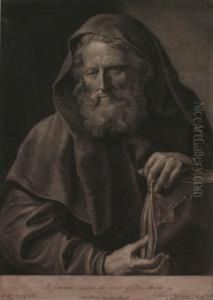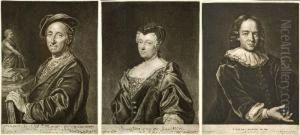Bernhard Vogel Paintings
Bernhard Vogel was a German engraver and painter best known for his detailed cityscapes and architectural works. He was born in Nuremberg, Germany, in 1683, into an era when the arts were flourishing in many European cities. Vogel's work is often characterized by its precision and the clarity of its detail, which reflected the Baroque interest in realism and the burgeoning fascination with urban life and its representation.
Vogel's early life is not extensively documented, but it is known that he trained in the arts in his hometown. Nuremberg at the time was a hub for artists and craftsmen, and it provided a fertile ground for Vogel's talents to develop. He was part of the artistic milieu that included engravers, painters, and publishers, who were engaged in producing works that depicted the grandeur of contemporary architecture and city life.
During his career, Vogel produced a significant number of engravings, many of which were views of cities, castles, and other significant buildings in Germany and surrounding areas. These works were highly sought after by collectors and those interested in the documentation of architectural history. Vogel's engravings were not only artistic renditions but also served as historical records of the urban and rural landscapes of his time.
Unfortunately, Bernhard Vogel's life was not well documented, and as a result, details about his personal life, training, and travels are scarce. However, his surviving works continue to provide insight into the technical skill and aesthetic sensibilities of the period. Vogel's death in 1737 marked the end of a career that contributed to the rich visual culture of early 18th-century Germany. Today, his engravings and paintings are valuable for both their artistic merit and their documentary value, giving us a glimpse into the past through the eyes of a meticulous and talented observer.

